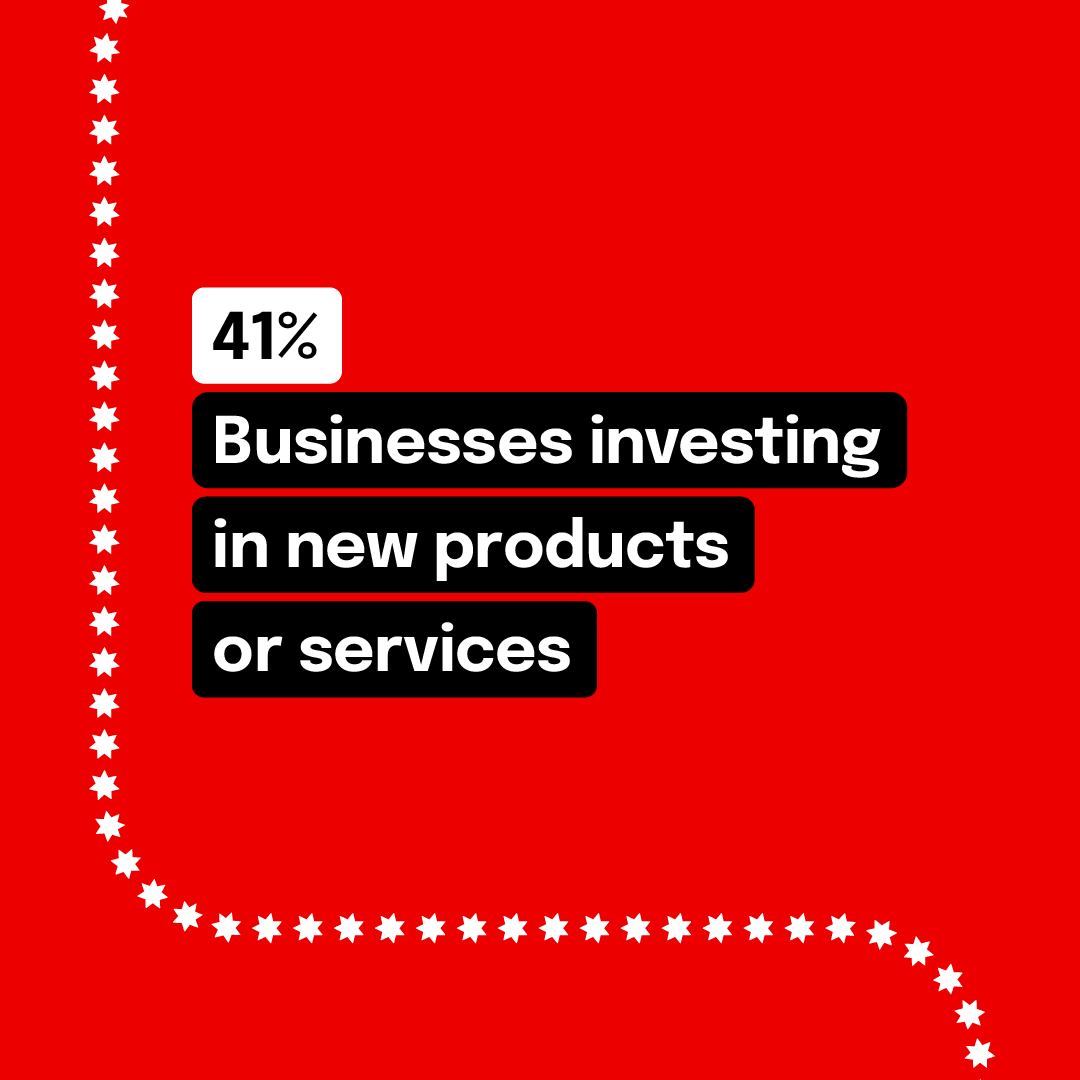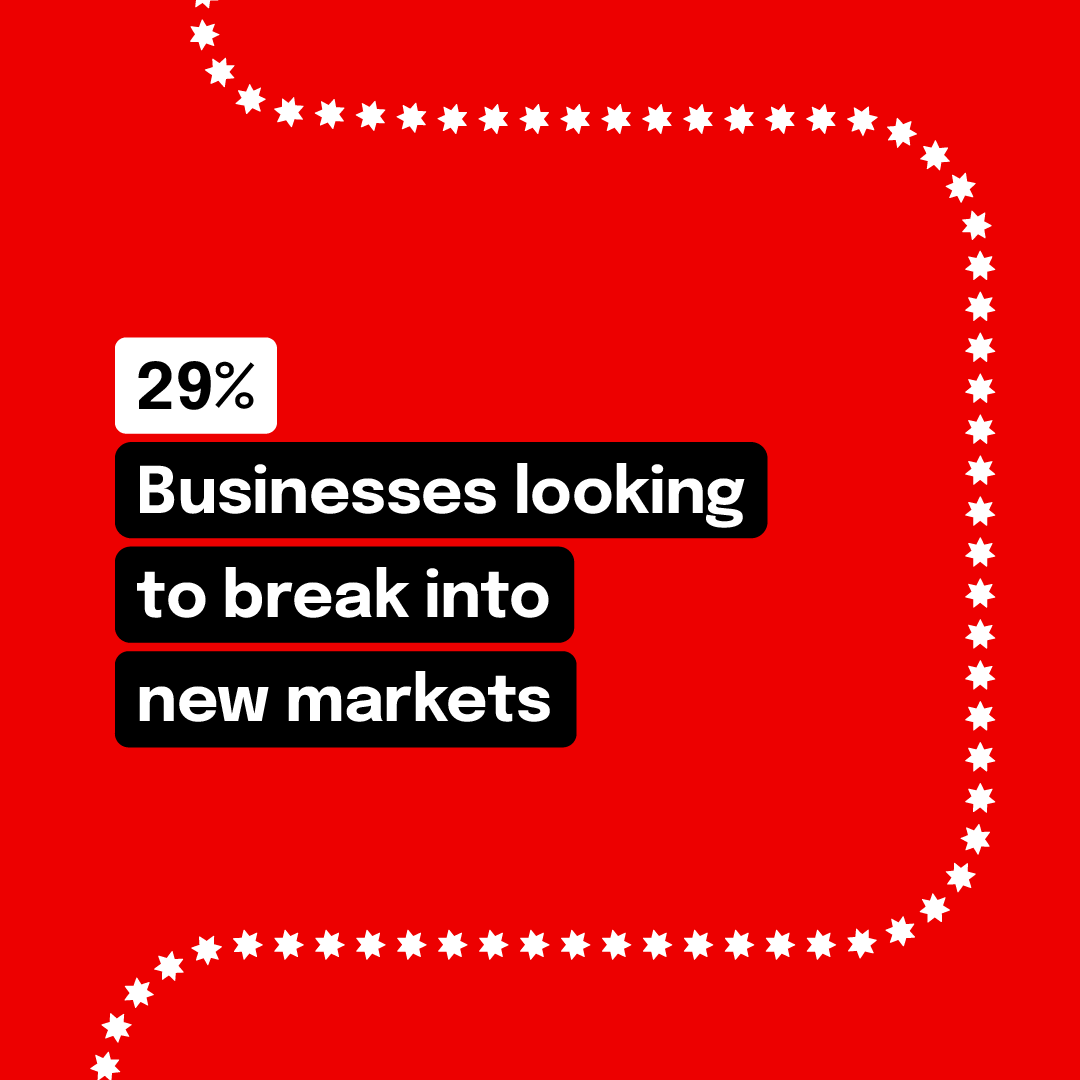RBA surprises with a hold, NAB still sees cuts in August, November and now February


Insight
SME appetite for investment is turning positive, the latest NAB Business Insights reports finds, with both broad and strategic investment on the table. Find out what it all means.

Resilience, agility and a forward-looking mindset – that’s the story told by our latest survey of Australian businesses.
The survey’s headline figure is one worth celebrating – almost 6 in 10 (55%) Australian companies have plans to invest to grow over the next 12 months.
But, of course, there’s more detail and diversity to the story. Look closer and some industries and regions are set to thrive. Others may be waiting for conditions to change before investing, or adjusting their strategy before catching up. Australia is a multi-speed economy; it’s pointing in the right direction but moving at different paces by sector and location.
For me, the most encouraging element of this survey is how it demonstrates the dynamism of the Australian economy, and our approach to doing business. No matter what pace we’re growing at, consumer demands are always changing and businesses are always looking to keep up. As technologies emerge and mature, and trading conditions evolve, the entrepreneurial spirit that drives so many of our SMEs is showing itself in their readiness to invest.
Let’s take a look at the five key areas businesses are looking to invest in.

Rising to the challenge of recent labour and skills shortages, businesses are investing into their recruitment and training. People are core to every business, and retention strategies are increasingly important in both increasing productivity and reducing spend on hiring. Regionally, investment intentions in staffing are particularly strong in South Australia (72%), while by industry Business Services (74%), Construction (73%) and Healthcare (70%) are standouts when it comes to putting the right team together.

Customer demands never stop evolving, and businesses are demonstrating their agility and responsiveness by offering new products or services to match. Diversifying a product offering can help a business expand, or simply pivot to meet changing conditions. The Retail industry (60%) is particularly proactive in this space, and Manufacturing (55%), Wholesaling (54%) and Business Services (54%) are not far behind.

As emerging technologies become more accessible and refined to meet their specific needs, Australia’s SMEs are setting themselves up for an increasingly digitalised and automated future. Software as a service (SaaS) and AI offer new capabilities, as well as the opportunity to optimise existing processes and service customers more efficiently. By industry and region respectively, the Property Services industry (48%) and Tasmanian businesses (40%) are ahead of the pack when it comes to investing in technology.

Opening up new markets is proving attractive – across Australia almost 3 in 10 (29%) businesses are planning to invest in geographical expansion. In Tasmanian businesses, that figure reached a remarkable 80%, with South Australia (36%), Queensland (33%) and Victoria (33%) also looking to take advantage of unmet customer demand in new regions. By industry, Transport & Storage (40%) is leading the charge in breaking new ground.

While the headline figure shows strong demand for new hardware and plant nationally, some industries are particularly hungry for new equipment. Accommodation & Hospitality (47%) and Transport & Storage (40%) are in a strong equipment investment phase.
If there’s a poster child for making smart investments to grow market share, it would have to be NAB customer Tasty Fresh.
Family owned and operated, Tasty Fresh operates a fleet of mobile food trucks selling salads, sushi, sandwiches and more, all made daily in its bakery and production facilities. In operation since 1979, the company has today grown to 200 trucks servicing 40,000 customers every day.
Its vans are fitted out with catering equipment and point-of-sale systems, allowing them to operate as mobile canteens for workplaces in Victoria, New South Wales, Queensland and Western Australia. Each truck represents a significant investment, but Tasty Fresh is continually renewing and expanding its fleet with a new purchase every fortnight.
That level of turnover means both reduced spending on maintenance and upkeep and a happy customer base serviced by first class equipment. Repayments are carefully structured to free up capital for expansion into production facilities or new markets.
This strategic investment in its core assets, to me, defines how Australian SMEs can take control of their finances to stay ahead of challenges and changing circumstances while seeking out opportunities for growth.
© National Australia Bank Limited. ABN 12 004 044 937 AFSL and Australian Credit Licence 230686.